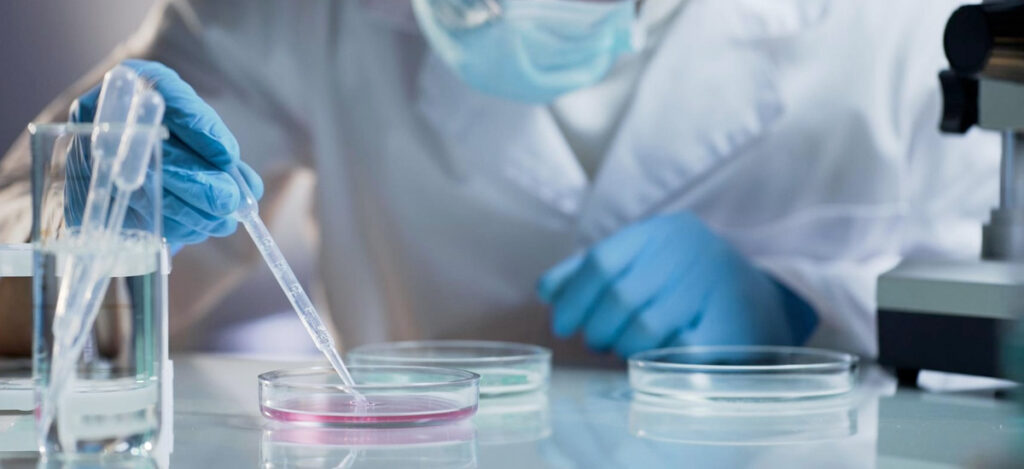Bioburden vs. Cytotoxicity Testing
What is bioburden?
The “bio” in bioburden refers to live biological organisms, and the “burden” in bioburden refers to the concentration of the viable biological organisms. Thus, bioburden is the concentration or quantity of microorganisms in a given area or from a particular sample. The higher the concentration of viable organisms on a device or product, the higher the burden is to kill those organisms, whether it is killing the organisms through sterilization procedures or killing the organisms through the effort of the human immune system.
What is cytotoxicity?
The “cyto” in cytotoxicity stands for cell. The “toxic” component of cytotoxicity refers to something poisonous. Thus, cytotoxicity refers to molecules and compounds that are poisonous to living cells. Cytotoxins are often chemical but can also be from natural or biological sources.
What are the differences between bioburden and cytotoxicity?
Bioburden is both a broader and a narrower term than cytotoxicity. Bioburden refers to all microorganisms (fungi, bacteria, etc.). On the other hand, cytotoxicity refers to all molecules and compounds poisonous to living cells, whether these molecules come from artificial, natural, living microorganisms or inanimate sources. Thus, the source of the cytotoxins is broader than the source for bioburden (aka only microorganisms). However, not all organisms have cytotoxic components, so bioburden is a wider definition from the perspective of microorganism sources. Another key difference between bioburden and cytotoxicity is that bioburden refers to a live cell count of the microorganisms present. Cytotoxins are often non-living. Often cytotoxic components of cells, such as endotoxins from gram-negative bacteria, are non-living components of cells. Thus, quantification methods for cytotoxicity and bioburden have no similarities.
What are the differences between bioburden testing and cytotoxicity testing?
Bioburden testing measures the viable organisms present in a given sample expressed as a total viable count. This total viable count gives a value to the microbial contamination level upon or within a particular product. This total viable count is expressed as colony-forming units (CFU’s). Furthermore, bioburden testing linked with microbiology testing can identify the types of live microorganisms present in a sample from a product, package, or manufacturing environment. However, unlike cytotoxicity testing, bioburden testing cannot test for microorganism cytotoxicity. Similarly, bioburden testing cannot test for the cytotoxicity of other medical product (or medical packaging) components. Bioburden testing follows the methods outlined in USP 60, USP 61, and USP 62.
Cytotoxicity testing evaluates the biological reactivity of mammalian cells and tissues to contact with elastomeric plastics and other polymeric materials that will come in direct or indirect patient contact during medical device or product use. Cytotoxicity is significant as it evaluates the biological effects of a sample’s leachable chemicals. The types of cytotoxicity testing to perform for your medical device or product depend upon the final product, the final product’s intended use, and the materials the final product is made of and packaged within. In-vitro methods of cytotoxicity testing include direct contact, agar diffusion, and elution testing. In-vivo methods of cytotoxicity testing include intracutaneous injection, systemic, and implantation testing. Most medical devices and products will only require in-vitro cytotoxicity testing. Reusable devices may require cytotoxicity testing for initial use and device use following recommended reprocessing. Cytotoxicity testing follows the methods outlined in USP 87 for in-vitro testing and USP 88 for in-vivo testing.

Why are both bioburden testing and cytotoxicity testing important?
Bioburden testing is an important quality control step that detects the level of contamination of a product at any stage, from initial product manufacture to final distribution. As microorganisms exist on every surface (including our body), bioburden can be accidentally introduced during the manufacturing or packaging process in many ways. Some of the most common examples are contamination through the raw materials used, technicians, tubing/piping used to transfer product between development stages in a process, or the manufacturing environment itself. With such abundant sources of contamination, regular bioburden testing supports the long-term control of manufacturing sites. Patient exposure to high bioburden levels can result in illness, sepsis, and (in severe cases) death.
Cytotoxicity testing is just as important as bioburden testing, especially for medical products or devices that will be inserted into the human body. Suppose cytotoxins (such as leachable chemicals or bacterial endotoxins) exist on or within medical products. In that case, the patient exposed will be at risk of pyrogenicity, organ failure, cancer, and (in severe cases) death.
Summary
Overall, both bioburden testing and cytotoxicity testing are imperative for regulatory approval of a medical device or medical product. These tests ensure that medical devices and products are sterile enough that patients will not be at risk of infection, toxicity, or pyogenesis following device exposure or product implantation. While bioburden tests for live microorganisms, cytotoxicity tests for molecules or compounds that are poisonous to cells, whether these components are chemical or biological.
Ethide Labs is a contract testing organization that specializes in Bioburden Testing and Cytotoxicity Testing. Ethide Labs also offers Microbiology Testing, Environmental Monitoring, Sterilization Validations, Bacterial Endotoxin Testing, EO Residual Testing & Package Integrity Testing services for medical device companies and allied industries. Ethide is an ISO 13485 certified facility.
References
Frank R. Noyes. Noyes’ Knee Disorders: Surgery, Rehabilitation, Clinical Outcomes. Elsevier. 2010.
United States Pharmacopeial Convention. <60> Microbiological Examination of Nonsterile Products- Tests for Burkholderia Cepacia Complex. Rockville, MD, USA. 2021. (USPC <60>)
United States Pharmacopeial Convention. <61> Microbiological Examination of Nonsterile Products: Microbial Enumeration Tests. Rockville, MD, USA. 2021. (USPC <61>)
United States Pharmacopeial Convention. <62> Microbiological Examination Of Nonsterile Products: Tests For Specified Microorganisms. Rockville, MD, USA. 2021. (USP <62>)
United States Pharmacopeial Convention. <87> Biological Reactivity Tests, In Vitro. Rockville, MD, USA. 2021. (USPC <87>).
United States Pharmacopeial Convention. <88> Biological Reactivity Tests, In Vivo. Rockville, MD, USA. 2021. (USPC <88>).
Share this in your social networks


